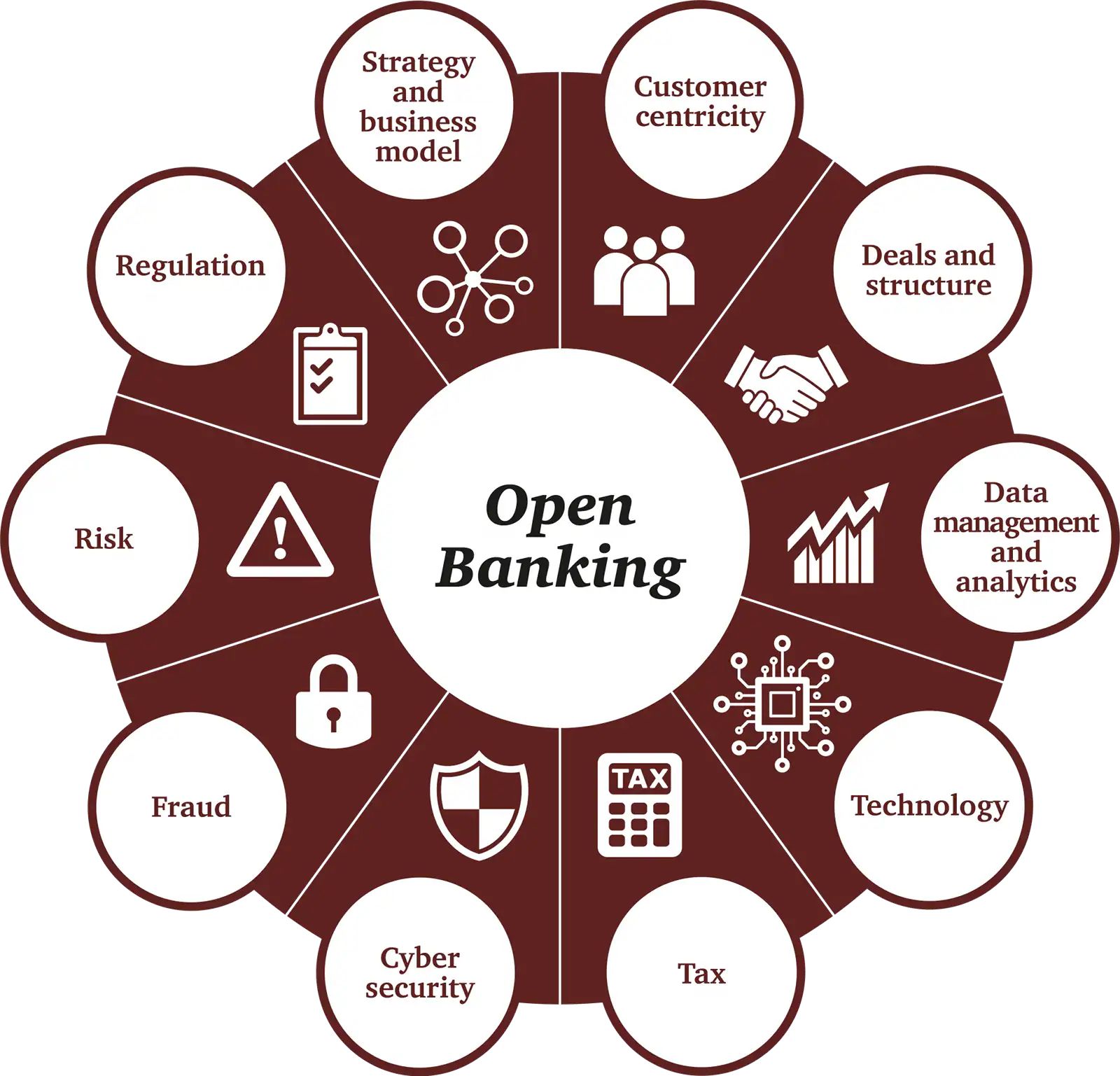What Is Open Banking?
Open Banking is a revolutionary concept that aims to give individuals and businesses more control over their financial data and enable them to securely share it with third-party providers. In simple terms, it allows different financial institutions to share customer data, with the customer’s consent, through the use of open Application Programming Interfaces (APIs).
Traditionally, banks have held a monopoly over their customers’ financial information. However, with Open Banking, customers can authorize authorized third-party providers, such as fintech companies or other banks, to access their account information. This groundbreaking shift in the banking landscape has the potential to transform the way we manage our finances and access financial services.
Open Banking is not just about sharing financial data; it also promotes innovation and competition in the financial sector. By granting access to customer account information, banks and other financial institutions can develop new and innovative products and services tailored to the specific needs of their customers. This enables customers to enjoy a wider range of options and a more personalized banking experience.
One of the key principles of Open Banking is that it is customer-centric. It places the customer in control of their own data, allowing them to choose which providers they share their information with and for what purpose. This transparency and control empower customers to make informed decisions about their financial lives.
Furthermore, Open Banking encourages collaboration between banks, fintech companies, and other financial institutions. Through partnerships and collaboration, these entities can combine their expertise to create innovative solutions that benefit customers, such as seamless payment platforms, personalized financial management tools, and improved access to credit.
In summary, Open Banking is a game-changing development in the financial industry that promotes data sharing, innovation, and customer-centricity. By opening up access to financial data and encouraging collaboration among different stakeholders, Open Banking has the potential to enhance the way we manage our finances and access financial services.
How Does Open Banking Work?
Open Banking operates on the principle of sharing customer data securely and with consent. To understand how it works, it is essential to grasp the key components and processes involved:
1. APIs (Application Programming Interfaces): APIs act as the bridge between different systems, enabling the secure transfer of data between them. Open Banking relies on APIs to facilitate the exchange of customer information between banks and authorized third-party providers.
2. Customer Consent: Open Banking is built on the foundation of customer consent. Before any data is shared, customers must explicitly authorize the release of their financial information to the designated third-party provider. This ensures that individuals retain control over their data and can decide with whom to share it.
3. Data Sharing: Once consent is obtained, the customer’s financial data, including transaction history, account balances, and other relevant information, is securely transferred from the bank to the authorized third-party provider through the API. This data sharing is conducted in a standardized and structured format to ensure compatibility and ease of use across different systems.
4. Services and Applications: The data received by the third-party provider is then used to develop innovative services and applications that provide value to the customer. These services can range from personalized financial management tools and budgeting apps to loan comparison platforms and payment solutions, tailored to meet specific customer needs.
5. Security and Compliance: Open Banking places great emphasis on the security and privacy of customer data. Banks and third-party providers must adhere to strict security protocols, ensuring that data transmission and storage are protected from unauthorized access or potential breaches. Additionally, regulatory bodies enforce compliance with data protection regulations, safeguarding customer information and maintaining trust in the system.
6. Ongoing Customer Control: Customers have the right to revoke their consent at any time, effectively withdrawing access to their financial data by third-party providers. This ongoing control ensures that individuals can monitor and manage the access to their information as per their preferences.
In summary, Open Banking operates through the use of APIs to securely transfer customer data from banks to authorized third-party providers. This data sharing is done with the explicit consent of the customer and is used to develop innovative services and applications that provide value and enhance the customer’s banking experience.
Benefits of Open Banking
Open Banking brings a host of benefits for both individuals and businesses, transforming the way we interact with financial services and enhancing our overall banking experience. Let’s explore some of the key advantages:
1. Enhanced Financial Management: Open Banking enables individuals to gather and view all their financial data from different accounts and institutions in one place. This comprehensive view allows for better financial management, budgeting, and tracking of expenses. With the help of personalized financial management tools and apps, individuals can gain insights into their spending patterns, identify areas for improvement, and make informed decisions about their finances.
2. Personalized Products and Services: By sharing customer data with authorized third-party providers, Open Banking facilitates the development of tailored products and services. Banks and fintech companies can analyze customer behavior and preferences to offer personalized recommendations, such as customized savings plans, investment options, or insurance policies. This personalization ensures that individuals receive offerings that align with their specific financial goals and needs.
3. Competition and Innovation: Open Banking fosters competition in the financial sector by enabling new entrants and fintech companies to offer innovative solutions. This competition spurs banks to improve their offerings, leading to better products, lower fees, and improved customer service. Ultimately, individuals benefit from a wider range of options and greater access to financial services.
4. Easy Account Switching: With Open Banking, individuals can switch banks or financial providers more seamlessly. Instead of the traditional complex and time-consuming process, the customer’s financial data can be securely transferred to the new provider with their consent, making it easier to switch accounts or take advantage of better offers, all while preserving the continuity of their financial management.
5. Streamlined Payments: Open Banking simplifies and accelerates payment processes. Through secure APIs, individuals can initiate payments directly from their bank accounts without the need for card details or other intermediaries. This not only saves time but also enhances security by reducing the risk of fraud associated with sharing sensitive payment information.
6. Improved Access to Credit: Open Banking has the potential to democratize access to credit by providing a more comprehensive and accurate assessment of an individual’s financial status. By analyzing the customer’s transaction history and financial data, lenders can make more informed decisions about loan approvals, interest rates, and credit limits. This benefits individuals who may have limited credit history or face difficulty obtaining traditional credit.
In summary, Open Banking offers a range of benefits, including enhanced financial management, personalized products and services, increased competition and innovation, easier account switching, streamlined payments, and improved access to credit. As the Open Banking ecosystem continues to evolve, we can expect even more advantages that will transform the way we interact with and benefit from financial services.
Challenges of Open Banking
While Open Banking presents numerous opportunities and benefits, it also comes with its fair share of challenges and concerns that need to be addressed. Let’s take a closer look at some of the key challenges:
1. Data Privacy and Security: One of the primary concerns around Open Banking is data privacy and security. As customer data is shared with third-party providers, there is an increased risk of unauthorized access, data breaches, or misuse of personal information. Strong security protocols, strict regulations, and robust encryption measures are necessary to mitigate these risks and ensure the protection of customer data.
2. Trust and Consumer Confidence: Open Banking is a relatively new concept, and building trust and consumer confidence is crucial for its success. Customers must have confidence in the security of their data and trust that their information will be used appropriately. Transparent communication, clear consent processes, and strong data protection measures are essential in building trust among customers.
3. Technical Integration and Standardization: Implementing Open Banking requires technical integration between banks and third-party providers. It involves creating and maintaining the necessary APIs, ensuring compatibility and seamless data transfer. Standardization of API specifications is crucial to promote interoperability and ease the integration process, enabling widespread adoption of Open Banking services.
4. Customer Awareness and Education: Open Banking is a complex concept, and many customers may not fully understand how it works or the potential benefits it offers. Educating customers about Open Banking, its advantages, and how to navigate the ecosystem is vital to ensure their active participation and informed decision-making regarding data sharing.
5. Regulatory Compliance: Open Banking is subject to various regulations and compliance requirements to protect customer data and ensure fair competition. Financial institutions and third-party providers must navigate the evolving regulatory landscape and ensure compliance with data protection laws, which can be a complex and costly process.
6. Limited Adoption and Interoperability: Despite the potential advantages, the adoption of Open Banking has been relatively slow, with limited interoperability across different institutions and platforms. This lack of widespread adoption hampers the full potential of Open Banking, and collaborative efforts are required to overcome barriers and encourage greater participation from financial institutions and service providers.
In summary, Open Banking faces challenges related to data privacy and security, trust and consumer confidence, technical integration and standardization, customer awareness and education, regulatory compliance, and limited adoption and interoperability. Addressing these challenges is crucial for the successful implementation and widespread adoption of Open Banking, ensuring that customers can fully benefit from the potential advantages it offers.
Open Banking Regulations in the UK
The implementation of Open Banking in the UK is governed by a comprehensive regulatory framework that ensures the secure and transparent sharing of customer data. Let’s delve into the key regulations that shape the Open Banking landscape:
1. The Competition and Markets Authority (CMA) Order: The CMA Order introduced the concept of Open Banking in the UK and mandated the nine largest banks to share customer data securely with authorized third-party providers. This order aimed to promote competition and innovation in the banking sector, giving customers greater control over their financial data.
2. The Payment Services Regulations (PSD2): The PSD2 directive, enforced at the European Union level, provides the legal basis for Open Banking in the UK. Under PSD2, banks are required to provide access to customer account information and initiate payments on behalf of customers, with their explicit consent. The regulations also mandate strong customer authentication to ensure the security of transactions.
3. Financial Conduct Authority (FCA) Guidance: The FCA, the regulatory body responsible for overseeing financial services in the UK, has issued guidance to ensure the effective implementation and compliance of Open Banking. The FCA enforces data protection rules, sets standards for APIs, and ensures fair competition between banks and third-party providers.
4. Data Protection and Privacy Laws: Open Banking must comply with robust data protection and privacy laws, such as the General Data Protection Regulation (GDPR) and the Data Protection Act 2018. These laws safeguard customer data, ensuring that it is collected, stored, and shared in a secure and lawful manner, with explicit informed consent from the individuals.
5. Open Banking Implementation Entity (OBIE): The OBIE acts as the governing body responsible for providing guidance, standards, and monitoring the implementation of Open Banking in the UK. They ensure that banks and third-party providers comply with the regulatory requirements and promote competition, innovation, and customer-centricity in the Open Banking ecosystem.
6. Consumer Protection Measures: Open Banking regulations include specific provisions to protect consumers. These measures focus on preventing unauthorized access, ensuring secure data transfer, enabling customer control of their data, and setting clear guidelines for dispute resolution and liability in case of any fraudulent or unauthorized transactions.
In summary, Open Banking in the UK is governed by a robust regulatory framework that includes the CMA Order, PSD2, FCA guidance, data protection and privacy laws, the OBIE, and consumer protection measures. These regulations aim to ensure the secure, transparent, and fair sharing of customer data, foster innovation and competition, and protect the rights and interests of consumers.
How to Access Open Banking Services
Accessing Open Banking services is relatively straightforward, and individuals can take advantage of the benefits it offers by following these steps:
1. Choose a Trusted Third-Party Provider: Start by selecting a reputable third-party provider that offers the Open Banking services you require. Research different providers, read reviews, and consider their track record in terms of data protection, security, and customer satisfaction.
2. Check for Regulatory Authorization: Ensure that the third-party provider is authorized and regulated by the appropriate regulatory bodies, such as the Financial Conduct Authority (FCA) in the UK. Authorization provides an added layer of confidence that the provider meets the necessary compliance requirements and operates within the legal framework.
3. Review Data Sharing Policies and Consent Processes: Before proceeding, carefully review the provider’s data sharing policies, terms, and conditions, as well as their consent processes. Make sure you understand how your data will be used, who will have access to it, and what level of control you have over the data sharing arrangement.
4. Register and Provide Consent: To access Open Banking services, you will typically need to register with the third-party provider. This registration process involves providing your personal and banking details, and granting explicit consent for the provider to access your financial data from your bank or other financial institution with whom you hold accounts.
5. Authenticate and Verify: Depending on the provider, you may need to authenticate your identity using a variety of methods, such as two-factor authentication or biometric verification. This step enhances security and ensures that only authorized individuals can access the Open Banking services.
6. Access and Manage Open Banking Services: Once you have completed the registration and authentication process, you can access the Open Banking services provided by the third-party provider. This may include features such as personalized financial management tools, payment initiation, access to credit or lending options, or other innovative services that utilize your financial data.
7. Monitor and Control Data Sharing: Regularly review and monitor the data sharing arrangements with the provider. Ensure that you have full control over the access to your data and can modify or revoke consent at any time. It is important to remain vigilant in managing your data and only share it with trusted providers.
In summary, accessing Open Banking services involves choosing a trusted third-party provider, checking for regulatory authorization, reviewing data sharing policies and consent processes, registering and providing consent, authenticating and verifying your identity, accessing and managing the services, and monitoring and controlling data sharing arrangements. By following these steps, you can securely and effectively leverage the benefits of Open Banking services to enhance your financial experience.
Popular Open Banking Apps in the UK
The emergence of Open Banking has paved the way for innovative and user-friendly apps that leverage financial data to offer personalized services and empower individuals in managing their finances. Here are some popular Open Banking apps in the UK:
1. Yolt: Yolt is a comprehensive money management app that allows users to view all their bank accounts in one place. It categorizes transactions, sets budgets, and provides personalized insights, helping users track their spending patterns and make informed financial decisions.
2. Emma: Emma is a free financial management app that helps users keep track of their expenses and budget effectively. It enables users to connect all their bank accounts, credit cards, and investment accounts to gain a holistic view of their finances, set saving goals, and receive smart suggestions to optimize their spending.
3. MoneyDashboard: MoneyDashboard brings all your financial accounts together, allowing you to view your transactions, analyze your spending, and set financial goals. The app provides insights into your financial habits and offers personalized recommendations to help you save money and make smarter financial choices.
4. Monzo: Monzo is a digital bank that offers a range of Open Banking-powered services. With its user-friendly app, users can easily track their spending, create budgets, and receive real-time notifications about their transactions. Monzo also provides insights into spending habits and offers tools to help users save and manage their finances more effectively.
5. Starling Bank: Starling Bank is another popular digital bank that embraces Open Banking. It provides a highly intuitive app that offers real-time spending notifications, personal money management tools, and savings goals. Users can easily connect their accounts with other financial providers and access a range of financial services within the app.
6. Plum: Plum is an AI-powered savings app that uses Open Banking to analyze your spending habits and automatically save small amounts of money on your behalf. It tracks your income and expenses, identifies areas for saving, and transfers money to a dedicated savings account, helping you build a savings habit effortlessly.
7. Tink: Tink is a financial aggregator app that allows users to connect their bank accounts, credit cards, and other financial products in one place. It offers a consolidated view of your finances, categorizes your transactions, and provides budgeting tools to help you manage your money efficiently.
In summary, these are just a few examples of popular Open Banking apps in the UK. Each of these apps offers unique features and benefits, leveraging Open Banking to provide personalized financial management tools, insights, and services. By utilizing these apps, individuals can gain greater control and transparency over their finances, making it easier to manage money, save effectively, and achieve their financial goals.
Future of Open Banking
The future of Open Banking holds immense potential for further innovation, collaboration, and enhanced financial services. Here are some key trends and possibilities that we can expect in the evolving landscape of Open Banking:
1. Expansion of Open Banking Ecosystem: We can anticipate the continued growth of the Open Banking ecosystem, with more financial institutions, fintech startups, and third-party providers joining the movement. This expansion will result in a wider range of services and options for individuals and businesses, fostering greater competition and innovation in the industry.
2. Integration of new technologies: Open Banking is likely to intersect with other emerging technologies, such as artificial intelligence (AI), machine learning (ML), and blockchain. These technologies can further enhance data analysis, personalized services, and security in Open Banking applications. They can also enable more seamless, automated processes, making financial transactions and decision-making more efficient and convenient.
3. Enhanced Customer Experience: Open Banking aims to prioritize the customer experience by offering tailored, personalized financial services. In the future, Open Banking apps and platforms will continue to evolve and refine their offerings, leveraging customer data to provide hyper-personalized recommendations, customized product offerings, and seamless user interfaces that cater to the specific needs and preferences of individual users.
4. Open Banking for Businesses: While Open Banking has primarily focused on individuals, we can expect an increased emphasis on Open Banking services tailored to the needs of businesses. This can include improved cash flow management, access to tailored credit solutions, automated financial reporting, and simplified payment processes, providing businesses with greater financial control and efficiency.
5. International Collaboration and Standardization: Open Banking initiatives are not limited to the UK. We can anticipate increased international collaboration and standardization efforts, enabling the seamless sharing of financial information across borders. This would allow individuals and businesses to access financial services globally and promote interoperability between different Open Banking ecosystems.
6. Data Privacy and Security Measures: As Open Banking continues to evolve, data privacy and security will remain a top priority. Regulatory bodies and industry players will continue to enforce and enhance measures to protect customer data, including stringent data encryption, strong authentication protocols, and robust monitoring and compliance frameworks.
7. Expansion of Open Finance: Open Banking is just the beginning. The concept of Open Finance, which encompasses a broader range of financial data beyond traditional banking, is gaining momentum. The future will see the incorporation of additional financial products and services, such as investments, pensions, insurance, and more, into the Open Finance ecosystem, providing individuals with a holistic view of their entire financial landscape.
In summary, the future of Open Banking holds great promise. With ongoing innovation, the integration of new technologies, enhanced customer experiences, increased international collaboration, improved data privacy and security measures, and the expansion towards Open Finance, Open Banking will continue to transform the way we manage our finances, providing individuals and businesses with more control, convenience, and a wealth of innovative financial services.

























